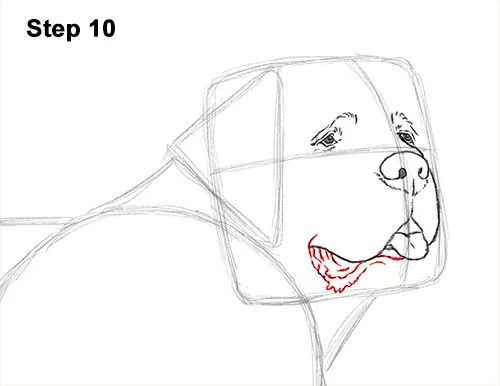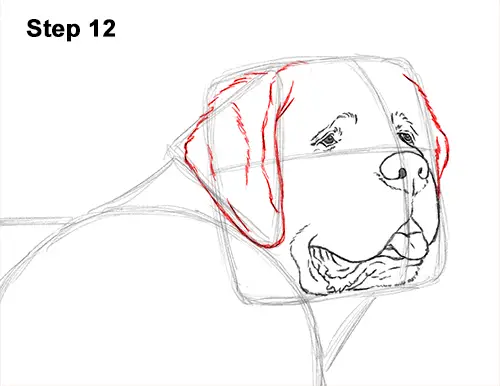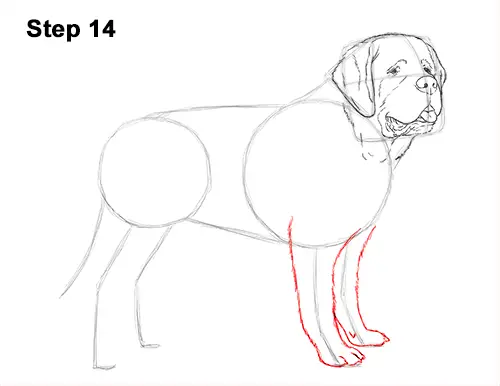
Step 10: Now draw the dog's droopy lower lips using a series of curved lines under the lip on the left side. First draw a curved line under the St. Bernard's top lip on the far left side. Then draw another curved line underneath but give the line a few bumps along the way. The last line should connect to the top lip on the left side. Add some extra short lines within the shape.

Step 11: Use the bottom edge of the main square as a guide to draw the St. Bernard's lower jaw. Add a couple more lines for the extra loose skin of the lower lips. Add the dog's chin under the tongue as a curved line that's made up of quick, short strokes to represent fur. Draw a curved line on the left side for the hanging jowls.

Step 12: Use the triangle on the left side as a guide to draw the St. Bernard's ear. Follow the basic path of the triangle as you darken the shape but use quick, short strokes for furry texture. Make the shape of the ear more rounded as you follow the basic path of the triangle. Add a few more quick, short strokes within the shape of the ear for more detail on the fur. Draw the dog's other ear using the right edge of the square as a guide. The head is blocking most of it, so only draw the visible portion.

Step 13: Use the initial square as a guide to draw the rest of the St. Bernard's head. Follow the basic path of the square but make the shape of the head rounder. Use quick, short strokes as you darken the shape of the head for a furry texture. Add some extra lines inside the head, under the eye, for the folds of skin. Draw a couple of curved lines under the dog's head that are made up of quick, short strokes for the loose skin or dewlap.

Step 14: Use the lines on the right side of the dog's body as guides to draw the front legs. Lightly sketch the shape of the legs as you follow the path of the guide lines. The legs should be a bit wider at the top. Bend them near the bottom to indicate the joint. When you get the structure of the legs right, darken the lines using quick, short strokes. St. Bernards can have longer fur, so use longer strokes as you draw the shape of the leg for a shaggier coat. Add a couple of short, curved lines at the bottom to separate the individual toes. Draw the dog's front leg on the other side the same way.







